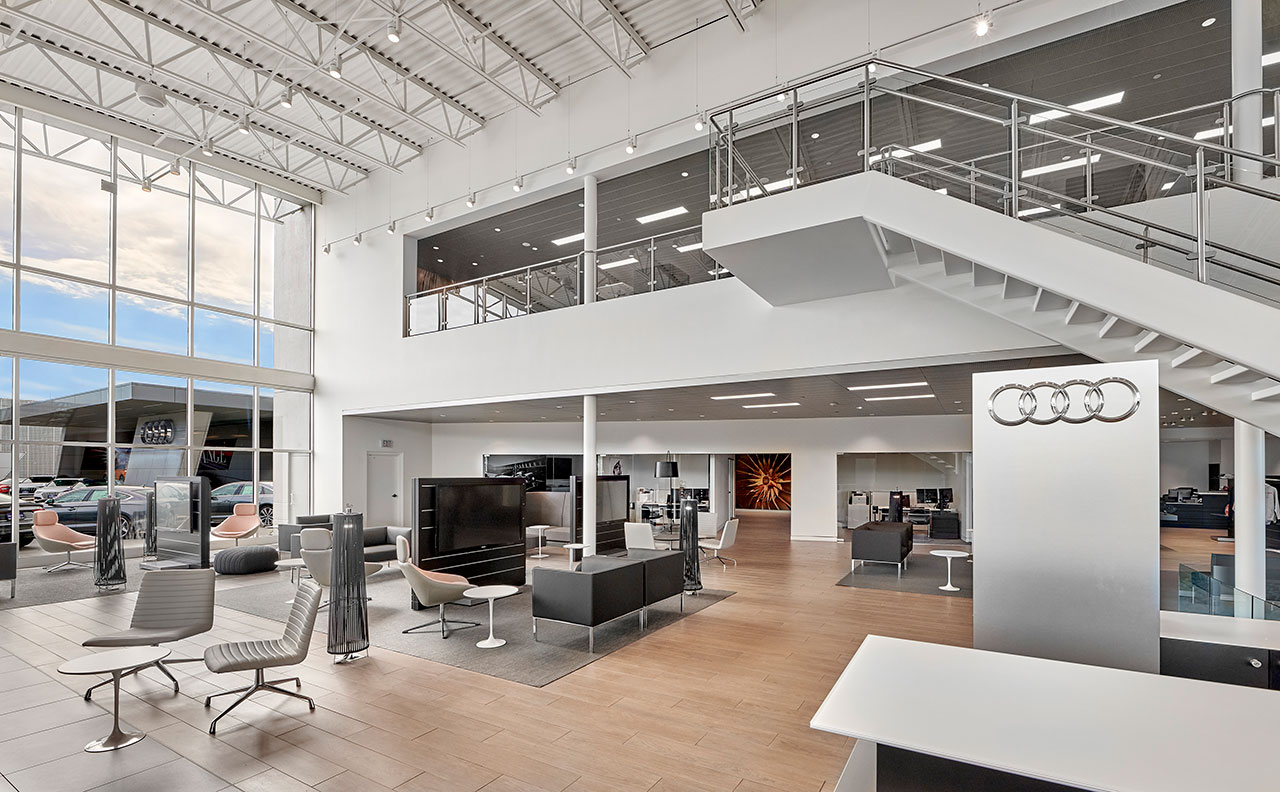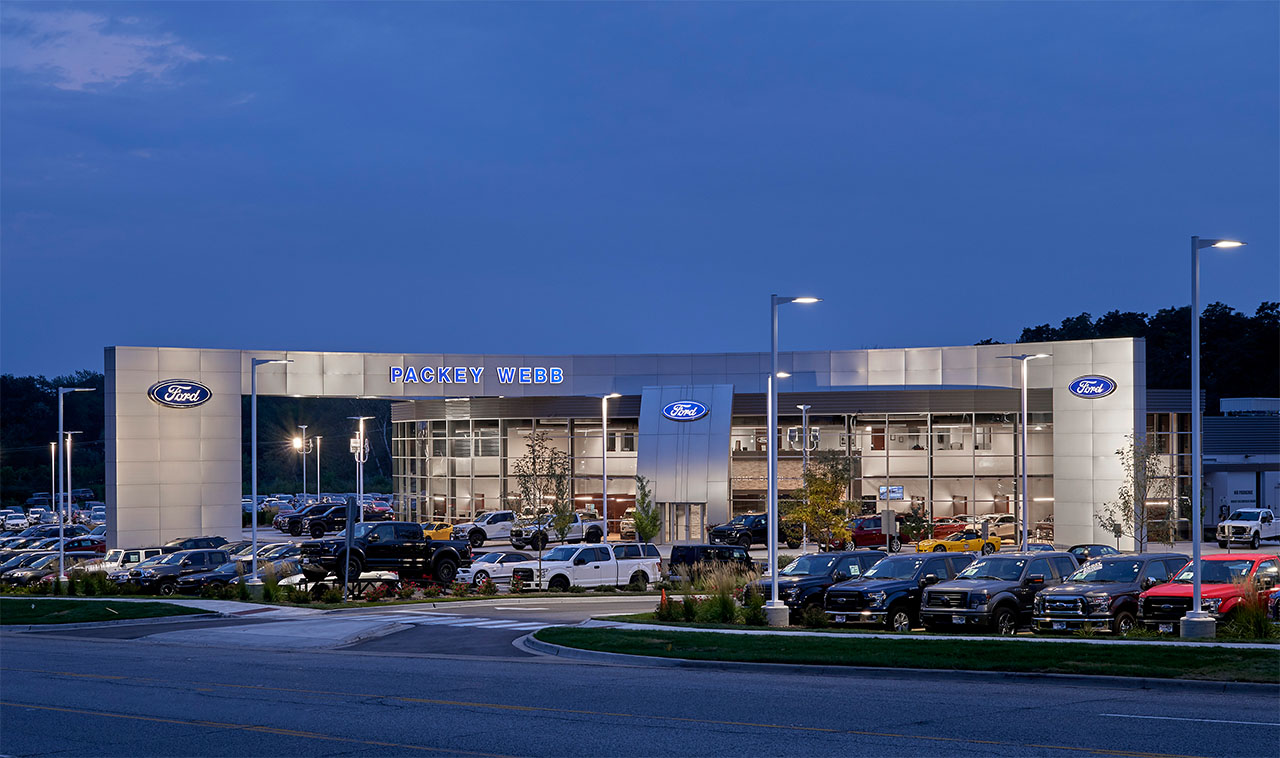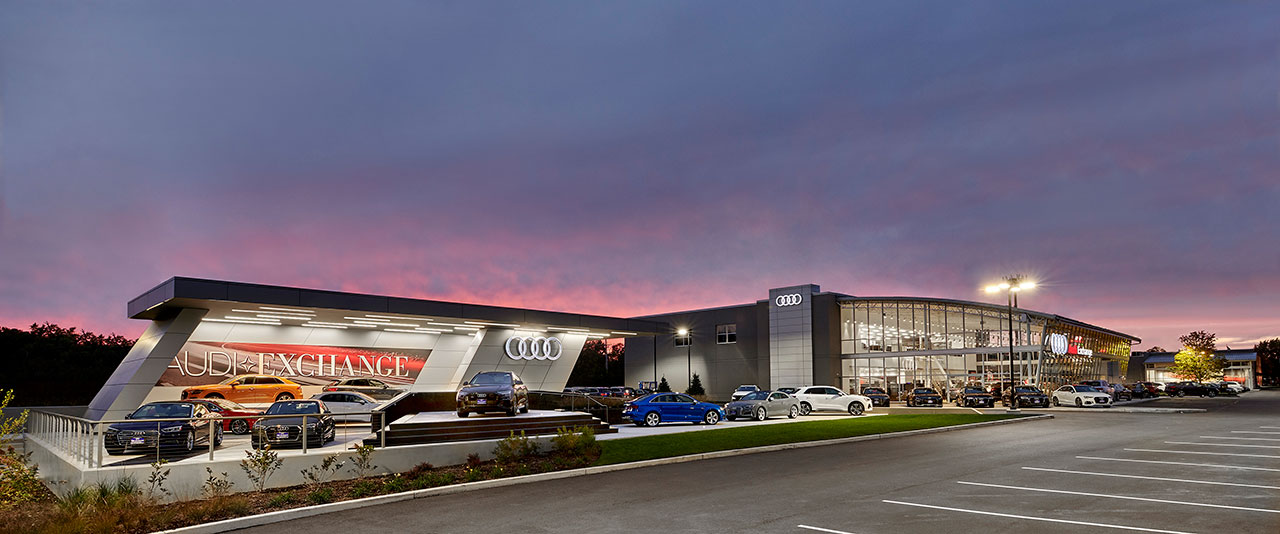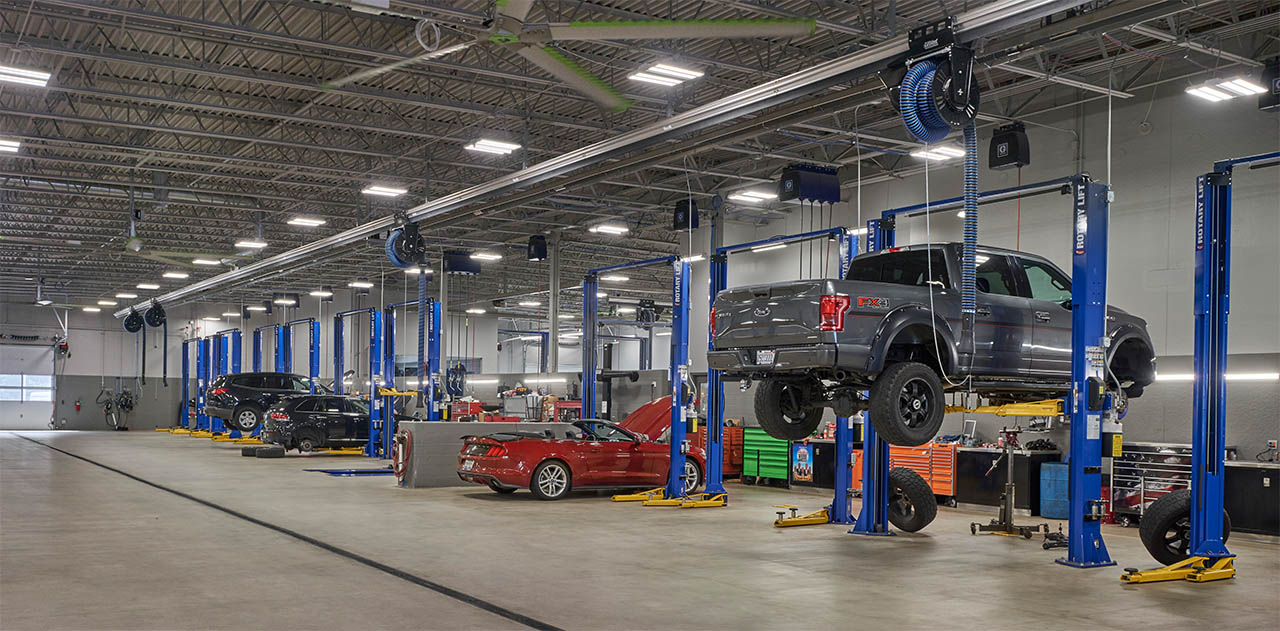

The retail industry, in response to COVID, has undergone major changes, and the automotive industry is no exception. Customer expectations have shifted as ubiquitous technology is allowing people to, not only work from home and lead more flexible and mobile daily lives, but also seamlessly browse for – and buy – cars online as if that was always the preferred way to purchase a new vehicle. Competition remains intense as car brands produce increasingly innovative new products and lure customers with greater purchase incentives. Keeping up with the Joneses has never been more challenging.
With average operating and gross profits steadily falling since 2015, automotive brands need to seize every resource at their disposal to safely bring customers back to the dealership. Design has a crucial role to play here. An intelligently designed sales environment for the new era can yield dividends in the form of top customer satisfaction indexing (CSI) scores -- encouraging repeat visits and ultimately brand loyalty.
CVG Architects has designed high-performing dealerships for some of the world’s premier automotive brands, such as Audi, GMC, Ford, and BMW. We understand firsthand how design can strengthen a dealership’s competitive advantage in the marketplace. Combining our knowledge of industry-wide trends with a focus on the unique local context of each dealership, we have observed three key principles in recent years that would benefit any automotive business, even in light of today’s circumstances:
Even before COVID, thanks to communication technology and e-commerce, according to Ernst & Young’s Automotive Retail 2030 report, in-person visits to dealerships had dropped. But amongst the buyers who visit a local dealership in person, 70% intend to make a purchase on their first visit. First impressions (still) really are everything, and time is limited to earn the sale.
Automobile dealerships must consider their brand and their target customers in the quest to add value, comfort, and enjoyment to the experience of a visit. Why browse for a car on the internet at home when you can have a safe, socially-distanced, five-star experience at the dealership? Bringing a hospitality focus into the experience of buying a car today is essential. As everyone is juggling family and work responsibilities, whether at home or on the go, amenity spaces to support – or relieve – these needs remain in demand.
Common amenity spaces we have designed or proposed for past clients, such as Audi Exchange Highland Park (pictured above) and Fields BMW Northfield, have included full-service cafés, hoteling desks for remote work, putting greens and golf simulators, mothers’ rooms, and even wellness/spa services. Applying safety and sanitation protocols to these shared spaces is critical now, of course; but offering these amenity-based environments is perhaps just as critical within the modern auto dealership. The experience of the dealership as a simple sales office connected to a service department is long gone.
Furthermore, the look and feel of the dealership interior goes a long way toward leaving a favorable impression with customers. Hotel-level finishes, soft-seating, and the conveniences outlined above create a relaxed, service-oriented atmosphere. Offering a boutique or kiosk with branded merchandise helps to engage customers with the brand. Integrated technology makes the sales experience seamless and time-efficient for customers.
The key takeaway for dealerships? It’s not about making customers feel like they’re at home. Make them feel like they’re relaxing in a safe haven, such an upscale hotel lobby -- and afterward, they get to enjoy the bonus of driving home in a new car.
Corporate design guidelines are not a place where creativity comes to die – we look at them as a springboard for smart, cost-effective innovation. Consideration of the unique characteristics of the client’s location and market can reveal opportunities for custom design and craftsmanship that truly set the location apart, creating a competitive brand advantage while still functioning within brand guidelines. 
At Packey Webb Ford in Downers Grove, Illinois (pictured above), the owners wanted to create a bold visual statement unlike any others in the vicinity. The dealership’s location at the bottom of a hill presented an ideal setting for a vertical focal point that would face approaching motorists. Working within Ford’s design guidelines and local code, we incorporated a brand identification wall jutting into the customer parking area as close to the roadway as possible. The result is a 36-foot-tall sign that fully integrates into the framework of the building and gives Ford a brand presence unlike any other dealership in their portfolio. 
CVG’s exterior design strategy for Audi Exchange Highland Park (pictured above) is another example of exploiting unique local circumstances to produce an original solution. We incorporated Audi’s angular aesthetic to design and engineer an outdoor canopy-covered sales/display plaza. The first of its kind in Audi’s North American portfolio, the plaza encourages customer browsing and exploration through its use of ramps and stairs. The plaza gives this location an impressive new outward marketing potential with its ability to capture the attention of passing motorists. Large-scale wall graphics reinforce the brand and bring cohesion across the scheme.
With some creative thinking applied to existing conditions, working within brand standards can be a powerful way to engage with customers, both up-close and from a distance, and heighten the overall image of dealerships.
While front-of-house hospitality and comfort can be a huge draw for customers, the ability of efficient back-of-house operations to boost customer retention and satisfaction – thereby improving CSI scores – cannot be understated. Up to 50% of a dealership’s gross profits are attributable to its service department. A well-designed facility can help technicians work faster and turn over higher numbers of customers each day, improving the experience and giving customers a reason to choose a dealership’s service location over other, possibly more affordable, third-party repair shops.
The process for any service department design should involve detailed interviews and close observation of staff operations. This allows the design team to identify gaps or areas for improvement in the workflow. 
Design solutions can address broad workflow elements, as well as logistical needs, such as equipment placement to maximize technicians’ work time. For example, at Packey Webb Ford, their previous shop layout was a long space with only one tool room, requiring technicians to lose efficiency throughout their day with frequent trips and longer travel times. CVG’s design solution improved this system by incorporating tool corrals throughout the shop, making common tools more accessible and giving time back to technicians. Other shop elements to consider include dual compressors and the location and number of fluid stations/reels, which can drive more efficiency and faster turnover in the workflow.
The new health and economic landscape, competition from both the internet and peer brands, as well as lifestyle shifts, have forced automobile dealerships to pivot more than once in the last several months – and years. But in a disruptive business environment, car brands still have plenty to offer their customers in the dealership experience. Harnessing design to elevate the brand at the dealership level and create extra value for customers is a surefire strategy for staying competitive.

